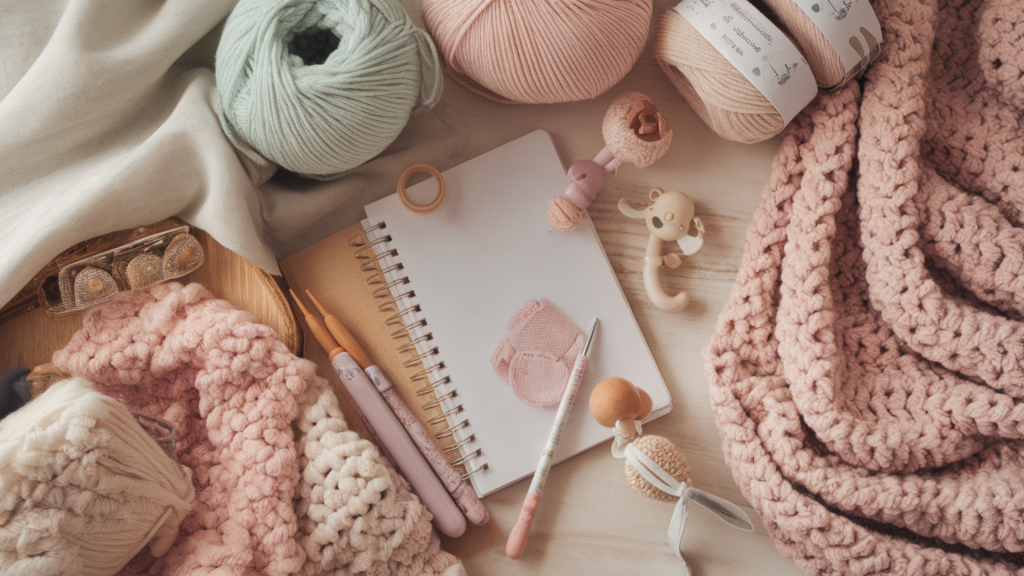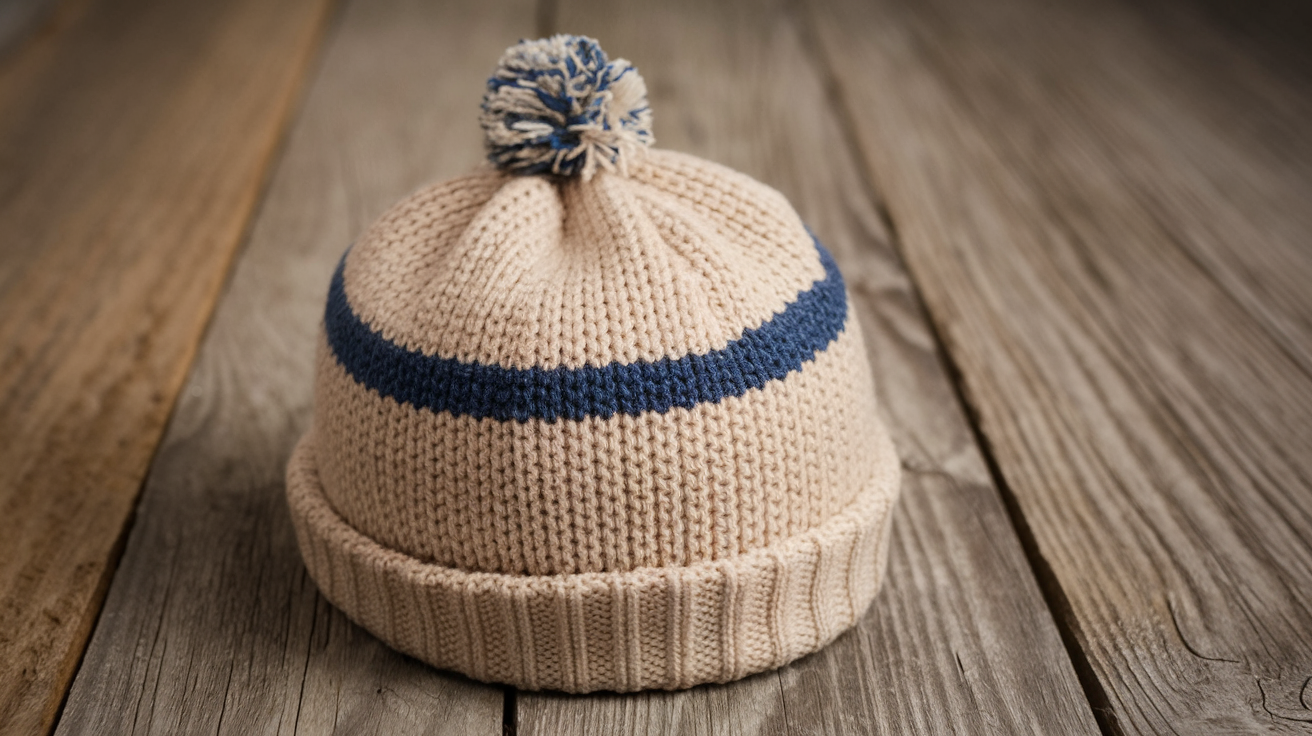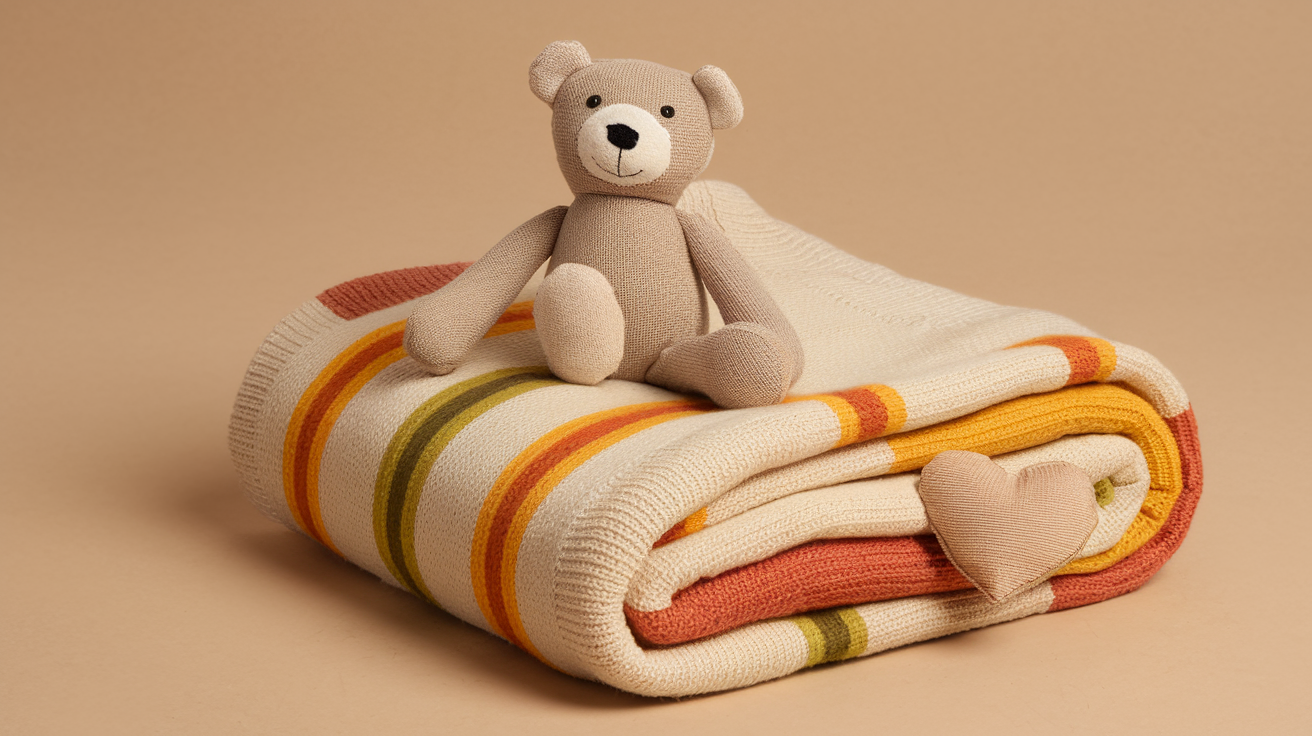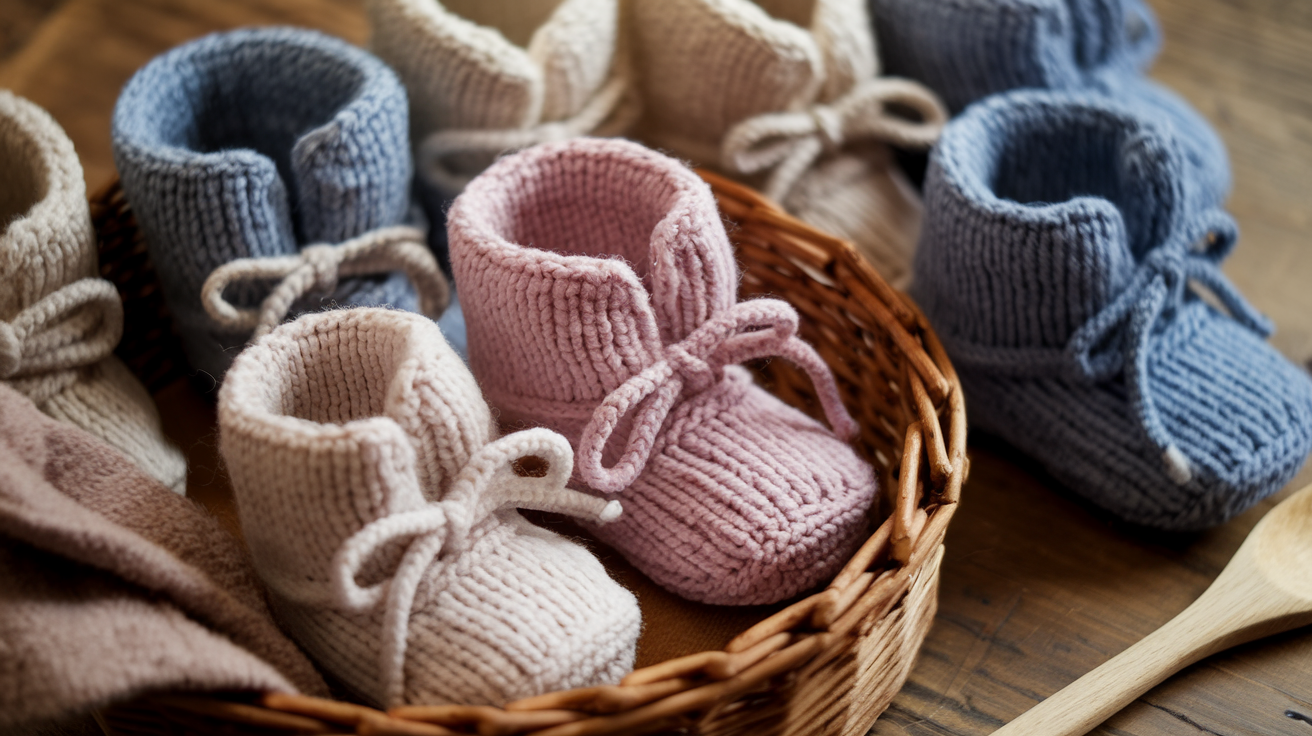Choosing the right yarn for a baby blanket can feel overwhelming. With countless options lining store shelves, how do you know which is best?
In this guide, I’ll walk you through everything you need to know about baby blanket yarn – from fiber types to weight categories and safety considerations. After making over 50 baby blankets, I’ve learned what works and what doesn’t.
You’ll discover:
- Which fibers are gentlest on sensitive skin
- How to choose the right weight for different seasons
- Easy-care options that survive countless washes
- Budget-friendly alternatives that don’t sacrifice quality
Whether you’re a beginner crafter or an experienced maker, this guide will help you choose a yarn that creates heirloom-worthy blankets while being practical for real baby life.
No more wasted money on yarn that pills, scratches, or can’t handle spit-up!
Let’s find your perfect baby blanket yarn together.
What is Baby Blanket Yarn?

Baby blanket yarn isn’t just regular yarn with cute packaging. It’s specially designed with little ones in mind.
I discovered this the hard way when I first tried making a baby blanket using leftover yarn from my sweater project. Big mistake! Baby skin needs special consideration.
The baby blanket yarn has these important qualities:
- Extra softness that feels gentle against sensitive skin
- Washable fibers that can handle frequent cleaning
- Durability to withstand tugging and dragging
- Safety features like hypoallergenic materials
You might wonder if you need special “baby yarn” or if regular yarn works too. The answer depends on a few things.
Some regular yarns work perfectly for babies! Others don’t.
Think about it this way: would you want that yarn rubbing against your face while you sleep? Babies have skin that’s much more sensitive than ours.
The best baby blanket yarns feel cloud-soft, clean up easily, and last through countless washes. They also come in weights that create the right amount of warmth without being too heavy.
I’ve made this mistake so you don’t have to – not all yarns labeled “baby” are created equal. Some are scratchy despite the cute label!
Remember: your perfect baby blanket yarn balances softness, practicality, and durability. The label might say “baby,” but your fingers (and the baby’s comfort) will tell the real story.
Why Choose Baby Blanket Yarn?
I love working with baby blanket yarn. It’s soft, warm, and perfect for baby projects. But why should you choose it? Let me break it down.
Soft and Gentle
Babies have delicate skin. Some yarns feel rough or itchy, but not this one. Baby blanket yarn is extra soft—almost like a plush toy.
Thick, But Light
It’s chunky, which means projects work up fast. But it’s not heavy. A baby blanket should feel like a hug, not a weight.
Easy to Work With
If you’re new to knitting or crochet, this yarn is easy to handle. It glides smoothly on hooks and needles. Plus, mistakes are simple to fix.
Durable and Washable
Babies make messes. Spills, drool, and surprises happen. Most baby blanket yarns are machine washable. No stress—toss it in and go.
Safe for Babies
Some fibers irritate sensitive skin. This yarn? Soft and baby-friendly. No scratchy surprises.
Fun to Use
It comes in soft pastels, bright colors, and playful patterns. You can mix and match to make something special.
Baby blanket yarn is a great choice. It’s soft, strong, and easy to work with.
Ready to start your project?
Types of Baby Blanket Yarn
Choosing the right yarn matters. Some are soft and fluffy, while others are light and breathable. Each type has its own feel, look, and care needs.
Here’s a simple breakdown:
1. Polyester
- Softness: Very soft
- Strength: Holds up well
- Best for: Everyday blankets, toys
- Care: Machine wash, tumble dry
- Good to know: Won’t shrink, but it may get fuzzy over time.
2. Cotton
- Softness: Soft but not plush
- Strength: Strong
- Best for: Lightweight blankets, warm weather
- Care: Machine wash, air dry
- Good to know: Breathable but not as thick as other yarns.
3. Bamboo Blend
- Softness: Super soft
- Strength: Medium
- Best for: Delicate baby items, gifts
- Care: Hand wash or gentle cycle
- Good to know: Eco-friendly, but can cost more.
4. Acrylic
- Softness: Soft
- Strength: Very strong
- Best for: Budget-friendly blankets
- Care: Machine wash, tumble dry
- Good to know: Holds shape well, but not as breathable.
5. Chenille
- Softness: Ultra-soft
- Strength: Medium
- Best for: Plush blankets, soft toys
- Care: Hand wash or gentle cycle
- Good to know: Can shed if not handled gently.
Which one is best? It depends.
- Want extra softness? Go for chenille or bamboo blends.
- Need something tough? Polyester and acrylic work well.
- Looking for breathable fabric? Cotton is a good choice.
Think about who will use the blanket and how much care you want to put in. That will help you choose the right yarn.
Best Baby Blanket Yarn Brands
Not all yarn brands are the same. Some are softer. Some last longer. Some are easier to clean. I’ve tried a few and found some that stand out.
Here are the ones I recommend:
1. Bernat Baby Blanket
This yarn is super soft and thick. It’s made from polyester, so it lasts a long time. It’s also easy to wash—toss it in the machine. Because it’s bulky, it works great for quick projects.
2. Lion Brand Baby Soft
This one is lighter than Bernat. It’s a blend of acrylic and nylon, making it strong. It’s a good choice for all seasons and comes in soft, pastel colors.
3. Red Heart Soft Baby Steps
This yarn has a smooth texture and feels soft. It’s made from acrylic, so it holds up well. It’s also easy to care for—machine washable and budget-friendly.
4. Hobby Lobby Baby Bee
This yarn is extra soft and plush. It comes in many colors and textures. It’s great for special baby gifts, but it needs a little extra care when washing.
5. Premier Parfait Chunky
This one has a velvety feel and is thick. It’s made from polyester, so it’s soft but strong. It works well for plush blankets and toys. You can machine wash it, but it’s best to let it air dry.
Each brand has something different to offer.
- Want something thick and quick to work with? Try Bernat or Premier Parfait Chunky.
- Need something lighter? Go with Lion Brand or Red Heart.
- Think about what matters most to you. Softness? Durability? Easy washing? That will help you pick the best yarn.
Color Selection for Baby Blankets
Picking the right color matters. Babies see colors differently than adults. Some shades feel calm. Others feel bright and fun.
Think About the Mood
Colors create feelings. Here’s a quick guide:
- Soft pastels – Gentle, calming (light blue, pink, mint, lavender).
- Warm neutrals – Simple and soft (beige, cream, light gray).
- Bright colors – Cheerful and lively (yellow, red, orange).
- Cool tones – Relaxing (blue, green, purple).
Who Is the Blanket For?
Newborns? Soft and light colors work best.
Toddlers? Try fun and bold shades.
A gift? Think about what the parents like.
Solid or Multicolor?
- Solid colors – Classic, easy to match.
- Two-tone – A simple way to mix colors.
- Ombre or gradient – Adds depth without being too busy.
- Patterns (stripes, checks, speckles) – Fun and creative.
Easy to Clean
Babies make messes. Light colors show stains more. Darker shades or mixed colors hide them better.
Final Tip: Pick a color you enjoy working with. After all, you’ll be spending time with it!
How to Choose the Right Yarn for Your Project?
Picking the right yarn can make or break your project. Not all yarns work the same way. Some are thick, some are soft, and some need extra care.
Ask yourself:
1. Who Is the Blanket For?
- Newborn? Go for super soft and gentle yarns like bamboo blends or chenille.
- Everyday use? Polyester or acrylic will last longer.
2. How Much Care Do You Want to Give?
- Easy-care? Choose polyester or acrylic—both go in the washer and dryer.
- Okay with extra care? Cotton and bamboo need more gentle handling.
3. Do You Want It Thick or Light?
- Warm and plush? Chenille or thick polyester works well.
- Light and breathable? Cotton or a bamboo blend is better.
4. What Texture Do You Like?
- Warm and plush? Chenille or thick polyester works well.
- Light and breathable? Cotton or a bamboo blend is better.
5. What Colors Do You Need?
- Acrylic and polyester have more color choices.
- Natural fibers like cotton and bamboo come in softer shades.
My Advice
Use polyester or acrylic if you want a soft, easy-care, and long-lasting option.
Try cotton or bamboo blends if you prefer a natural, breathable feel.
Consider who will use it and how much time you want to spend caring for it. That will help you pick the best yarn!
Tips for Working with Baby Blanket Yarn
Baby yarn can be tricky! After making dozens of blankets, here are my top tips:
Do a Wash Test First
Always wash a small swatch before starting your project. I once spent weeks on a blanket that shrank dramatically in its first wash!
A quick test with mild soap and warm water will save you hours of wasted work.
Check Your Tension Regularly
Baby yarn is often softer and stretchier than regular yarn. I stop every few rows to measure my work. Your blanket will look much more professional with consistent tension.
Use the Right Hook or Needle Size
Try going up a size from what’s recommended on the label. Larger hooks create a softer fabric that’s cuddlier for the baby.
Weave in Ends Extra Securely
Babies tug on everything, and baby items get washed constantly. I always weave my ends in multiple directions for extra security.
Store Your Work Properly
Keep your project in a zippered bag between sessions. Baby yarn attracts dust and pet hair like a magnet! I learned this after spending hours picking cat hair from a half-finished blanket.
What’s your biggest challenge when working with baby yarn?
How to Care for Baby Blanket Yarn Projects
Let’s be real – babies are mess-makers! That adorable blanket you spent weeks creating will face spit-up, diaper leaks, and sticky fingers. But with proper care, your handmade treasure can last for years.
Always check the yarn label first. Different fibers need different care.
Most baby blankets need gentle cleaning:
- Wash in cold or lukewarm water
- Use a mild detergent without bleach or softeners
- Avoid wringing or twisting the wet blanket
- Reshape while damp
But what about drying? Laying flat to dry is usually best. If you must use a dryer, choose low heat.
Ever notice how some blankets get scratchy over time? That’s often because of fabric softeners. Instead, add 1/4 cup of white vinegar to the rinse cycle for softness without buildup.
For storage, fold the blanket loosely or roll it. Avoid plastic bags that can trap moisture. A pillowcase works perfectly!
Remember: Proper care means your handmade gift might become a cherished keepsake that lasts for generations.
Fun Baby Blanket Yarn Project Ideas
Baby blanket yarn isn’t just for blankets. You can make all kinds of soft, cute things with it.
Here are some fun ideas to try:
1. Simple Baby Blanket
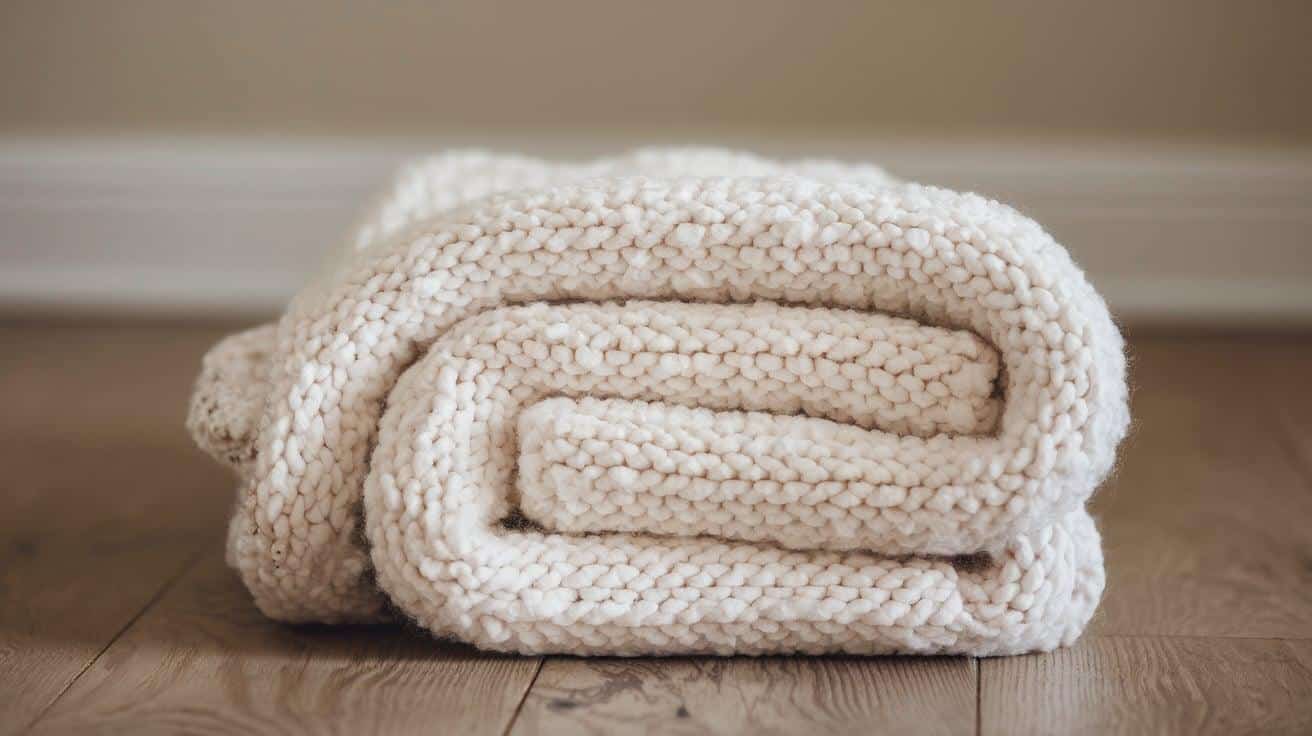
- It’s a classic project.
- Use basic stitches like single crochet or garter stitch.
- Pick soft colors for a calming look.
2. Soft Baby Hat
- It keeps little heads warm.
- Easy to make with a simple pattern.
- Use stretchy stitches for a comfy fit.
3. Lovey Blanket
- A mix of a blanket and a stuffed toy.
- It is small, easy to carry, and perfect for tiny hands.
- Tip: Add a friendly face to make it special.
4. Cozy Baby Booties
- Soft, warm, and adorable.
- Takes only a little yarn.
- Great for gifts.
5. Hooded Baby Blanket
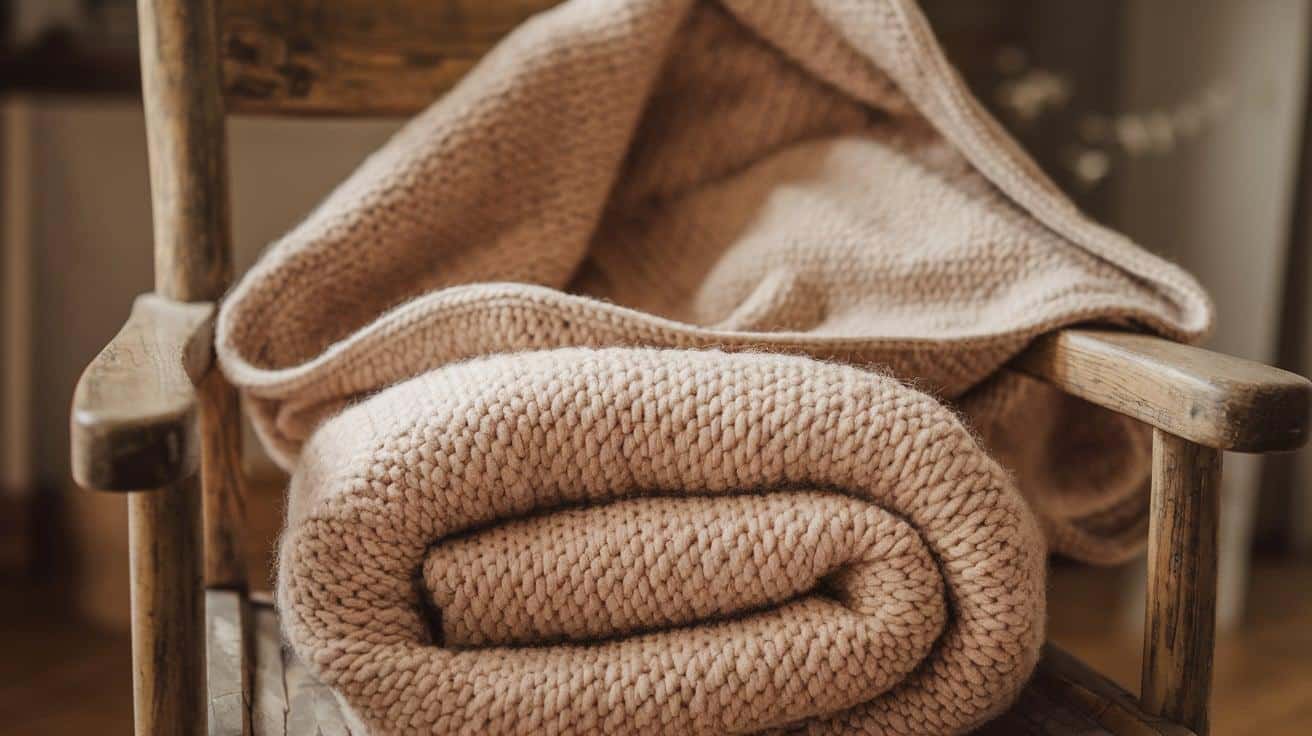
- A blanket with a built-in hood.
- Wraps babies up snugly and warmly.
- Extra soft and useful!
You don’t need to be an expert to make these. Just grab some yarn, pick a project, and start stitching!
Conclusion
Choosing the right yarn for baby blankets doesn’t have to be confusing. Remember to focus on softness, safety, and washability above all else.
Start with a small project if you’re new to baby yarns. This lets you test how the yarn feels and works up before committing to a bigger blanket.
Trust your hands when picking yarn. If it feels scratchy to you, it won’t feel good to a baby’s sensitive skin either.
Don’t be afraid to try different brands and fibers. Every baby is unique, and what works for one might not work for another.
Most importantly, enjoy the process! There’s something special about creating a handmade blanket that might become a child’s favorite comfort item for years.
Happy crafting, and may your baby blankets bring joy to both the maker and the little one!
Frequently Asked Questions
Can I Use Regular Yarn Instead of Baby Yarn for A Blanket?
You can, but regular yarn may be too scratchy or difficult to wash. Baby-specific yarns are made to be super soft, gentle on sensitive skin, and able to handle frequent washing without losing their softness.
How Much Yarn Do I Need for A Standard Baby Blanket?
For a typical 30″ x 30″ baby blanket, you’ll need about 3-4 skeins of medium-weight yarn. The exact amount depends on your stitch pattern and how densely you work your stitches.
Are Natural Fibers Better than Synthetic for Baby Blankets?
Neither is automatically better – both have pros and cons. Natural fibers like cotton are breathable but can shrink, while synthetics like acrylic are easy-care and affordable but less breathable.
How Do I Keep Baby Blanket Yarn Soft After Washing?
Use a mild detergent without fabric softeners that can build up on fibers. Dry on low heat or air dry, and wash only when necessary. Following care instructions for your specific yarn type is the most important step.
What’s the Best Yarn for A Baby Who Has Sensitive Skin?
Look for yarns labeled “hypoallergenic” like cotton or bamboo blends. Superwash merino wool can also work well despite being wool. Avoid yarns with added dyes or treatments if you are concerned about skin reactions.


